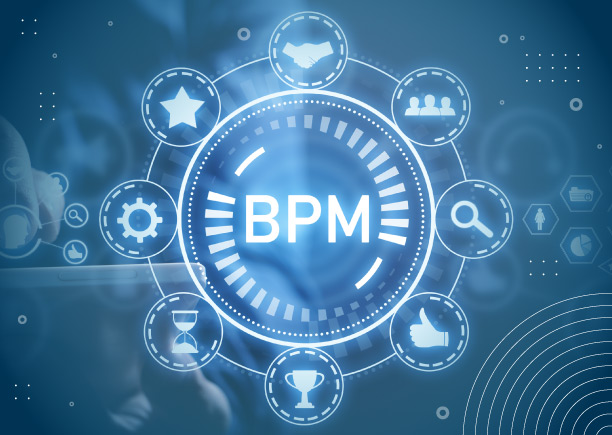Table of Contents
What is BPM?
BPM stands for Business Process Management. It is a discipline that focuses on managing and optimizing business processes to improve efficiency, productivity, and quality. BPM involves analyzing, designing, modeling, implementing, monitoring, and continually improving business processes to achieve organizational goals. It often involves the use of technology, such as BPM software platforms, to automate and streamline processes. BPM helps organizations identify areas for improvement, eliminate waste, and enhance the customer experience. It is a holistic approach that involves collaboration and communication among stakeholders, including employees, customers, and partners.
23 features that all BPM platforms should have
Business process management (BPM) platforms are essential tools for organizations looking to streamline their operations, increase efficiency, and optimize performance. However, with so many BPM tool on the market, it can be challenging to know what features to look for.
In this blog post, we’ll explore 23 essential features you need in a BPM platform to ensure your organization can achieve maximum productivity and effectiveness.
- Visual Process Modeling: A BPM platform should provide visual process modeling tools that allow you to map out and visualize your organization’s processes.
- Workflow Management: Workflow management capabilities enable you to automate processes and optimize resource utilization.
- Business Rule Management: A BPM platform should allow you to define and enforce business rules that govern the execution of processes.
- Data Integration: The ability to integrate with external data sources and systems is critical for BPM platforms to ensure your data is up-to-date.
- Analytics and Reporting: BPM platforms should offer analytics and reporting tools to help you identify bottlenecks and areas for improvement.
- Process Optimization: The ability to analyze and optimize processes is essential for improving efficiency and reducing costs.
- Task Management: Task management features enable you to assign tasks and monitor progress in real-time.
- Collaboration: Collaboration tools facilitate communication and collaboration between team members and departments.
- Mobile Access: Mobile access is critical for remote workers and enables employees to access critical information and perform tasks on-the-go.
- Role-based Access: Role-based access ensures that employees only have access to the information and functionality they need.
- User-friendly Interface: An intuitive and user-friendly interface is crucial for increasing user adoption and improving productivity.
- Customization: A BPM platform should allow you to customize the interface and functionality to fit your organization’s unique needs.
- Cloud-based: Cloud-based BPM platforms offer scalability, flexibility, and accessibility from anywhere with an internet connection.
- Security: Robust security features are essential for protecting your data and ensuring compliance with regulations.
- Audit Trails: Audit trails enable you to track and monitor activity, providing transparency and accountability.
- API Access: API access allows for integration with third-party tools and applications.
- Version Control: Version control features enable you to manage different versions of processes and maintain historical records.
- Template Library: A BPM platform should offer a library of pre-built process templates for common business processes.
- Change Management: Change management capabilities ensure that changes to processes are properly documented and communicated.
- Notification and Alerts: Notification and alert features keep team members informed of changes, updates, and critical events.
- Real-time Monitoring: Real-time monitoring enables you to track performance and identify issues as they happen.
- Compliance Management: Compliance management features help ensure your organization complies with industry regulations and standards.
- Customer Support: Finally, a BPM platform should offer robust customer support, including training, documentation, and ongoing assistance.
Benefits of BPM software
BPM software offers numerous benefits to organizations looking to optimize their business processes. Some of the key benefits of BPM software include:
- Increased Efficiency: BPM software helps to automate and streamline processes, reducing the time and effort required to complete tasks.
- Improved Productivity: By automating manual tasks, BPM software frees up employees to focus on higher-value activities, increasing overall productivity.
- Enhanced Quality: BPM software ensures that processes are standardized and executed consistently, resulting in higher-quality outputs.
- Greater Visibility: No code platform provides real-time visibility into process performance, allowing organizations to identify bottlenecks, monitor progress, and track KPIs.
- Better Collaboration: BPM software facilitates communication and collaboration among team members and departments, improving overall efficiency and effectiveness.
- Cost Savings: By reducing manual effort and increasing efficiency, process automation software can help organizations save time and money.
- Flexibility: BPM software is highly customizable, allowing organizations to adapt to changing business needs and requirements.
- Compliance: BPM software can help organizations comply with regulatory requirements and industry standards.
- Continuous Improvement: BPM software provides the tools and insights necessary to identify areas for improvement and continually optimize processes.
In conclusion, these 23 essential features are critical for any BPM platform to help organizations achieve their business goals, increase efficiency, and optimize performance. When evaluating BPM solutions, be sure to look for these features to ensure you’re selecting the right tool for your organization’s needs.
Yoroflow’s BPM software offers numerous benefits to organizations, including increased efficiency, productivity, and quality, greater visibility, better collaboration, cost savings, flexibility, compliance, and continuous improvement. These benefits make BPM software a valuable investment for any organization looking to optimize its business processes and achieve its strategic goals.




